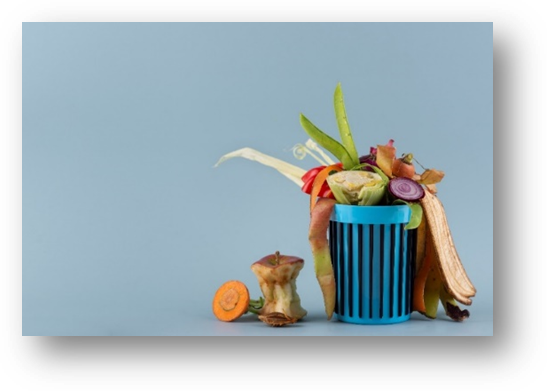3. HOW CAN ORGANISATIONS USE WASTE AS A RESOURCE?
What if we could increase the treatment of waste as a resource, and thus reduce the need to extract new resources from the environment? If we mine less material and use existing resources, we can avoid some impact along the production chain.
For instance, entreprises can establish partnerships, as the waste of some can be the resource of others. A curious case is, for example, Danone, that, in Germany, turns whey – a by-product of cheese making – into lactose for pharmaceutical purposes. Other interesting case happens in Manchester, in the United Kingdom, where Kellogg’s cereal factory has teamed up with the British brewery Seven Bro7hers, which uses the corn flakes that fail quality control to make beer. Do never forget that unused waste is always a potential loss.
Let’s see some more detailed practical examples about how waste can be used as a resource.
Food waste
Retailers can reduce edible food waste by improving logistics, balancing supply and demand, redistributing surplus edible food and incorporating “ugly” products into recipes.
City and municipal governments can put in place the necessary procedures and regulations to collect organic waste separately and treat wastewater so that valuable products can be made from waste. They can also install infrastructures to supply fertilizers made from organic waste from cities to peri-urban agriculture (in conjunction with local sourcing of food).
Restaurants can redesign their menus to include components made from food scraps.
Farmers can change their practices and use fertilizers derived from organic waste streams to reduce losses on the farm.

www.freepik.com/free-photo/arrangement-compost-made-rotten-food-with-copy-space_17662397.htm
Paper
First, always think before printing – a lot of times things are printed without need and they end on the waste container soon, without having served any purpose. It is smart to transfer a business to an online level: this measure turns an office cleaner, saves space and supports saving paper and, consequently, decrease the amount of cut trees to produce paper.
To reuse paper, you can partner with citizens or other SMEs and use it as an inlay for pet cages. This type of paper is great for lining bird cages or shredding hamster litter, for example. Paper can also be used as a cleaning agent for cleaning windows and as compost for agriculture. Newspapers can be an essential part of a balanced compost pile and are considered high in carbon.
Plastic
Plastic is used for many types of product packaging, including cups, bottles, wrappers and sleeves. Numerous factors have contributed to the widespread use of plastic, such as the low cost of production, its low weight and its cheap shipping as it is of lightweight. However, many plastics packaging and containers of consumer goods are of single use and end up in the rubbish quite soon.
SMEs, other organisations and citizens in general must refrain from using plastic as much as possible. Then, it is also possible to give to plastic a fresh design and purpose, for example using different packaging types as buckets, vases or containers.
It is also a good and strategic idea for companies to enter partnerships with other organisations and provide them plastics so they can give them a second life.
Glass
Glass can be 100% recycled and does not degrade through the recycling process so it can be recycled again and again. For example, glass can be melted and be used as a resource for the making of new bottles, decorative objects and jewellery.
But glass can also be reusable as must times as possible as it is long-lasting, nontoxic, durable and corrosion resistant, so it does not break down overtime like plastic. Consequently, reusable glass packaging has been experiencing a huge development and rethinking in the most recent years. Bottles, jars and containers can be used in different ways, such as for storage, crafts and DIY projects.

 Español
Español Turkish
Turkish български
български Magyar
Magyar Polski
Polski Português
Português